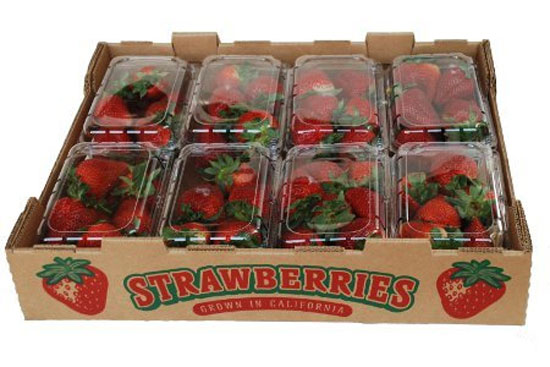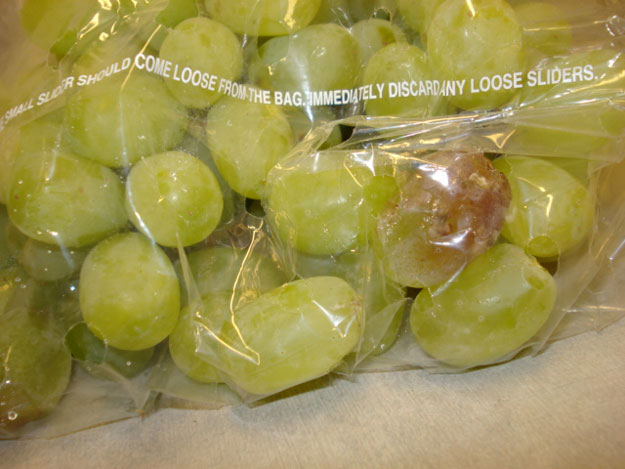We have received many questions over the years concerning how the USDA calculates their percentages of defects for produce packed in clamshells or bags, where the entire unit is sold to the consumer. Many QA’s use an alternative method that conflicts with the USDA.
The USDA’s procedure is as follows: For products like grapes, berries, carrots, romaine hearts, etc., the USDA will count all specimens within the container and base the percentage of defects on this amount. For example, if a clamshell contains 20 strawberries, the USDA will count out the 20 berries, and if they find 2 bruised strawberries they will report 10% damage by bruising (2/20 = 10%). In the next sample they would count out the entire clamshell of 25 berries and find 3 decayed strawberries and 1 berry being bruised. They would report 12% decay and 4% damage by bruising for that sample. All the samples would be added up and a final percentage of defects would be reported.

The other method we are seeing is as follows: For these same items, consumer units, the QA’s are basing their percentage of defects on the unit itself. If the unit is found not up to their standards the entire unit is considered a defect and the percentage of defects is determined by dividing the number of units found to be defective by the total number of units inspected. For example if the QA inspects 50 total clamshells of strawberries and finds decayed berries in 6 of these units they would report the percentage of defects as 12% decay (6/50 = 12%).

Does this really make a difference? Yes, absolutely. The US Grade Standard tolerance for defects were created on using a specific procedure, the USDA’s procedure. For example, one wholesaler sold a Lot of grapes to a retailer. The QA for the retailer rejected the grapes, reporting 80% decay. The wholesaler followed up with a USDA inspection, and the USDA inspector found 3% decay, by estimating the weight of all the decayed grapes and dividing by the total weight of grapes inspected. Why the difference? The QA inspected 10 bags of grapes and found decayed grapes (maybe 2 to 3 decayed grapes in a bag) in 8 of the 10 bags, thus reporting 80% decay.
Another example I encountered was a QA was finding a decayed strawberry in 2 clamshells per master and reported 25% decay (2/8 = 25%). Remember, one strawberry out of a 20 count sample is 5%. If 5% decay was found in 2 samples, the total decay found would be 10% (5+5 = 10%), out of 8 clamshells inspected. The USDA would divide the 10% total decay found by the number of samples or clamshells inspected (8). Thus the USDA reported 1% decay versus the 25% decay reported by the QA.
To learn more about the proper inspection procedures we have a 30 minute web based training available on our Services Offered page.
Years ago asking for a Federal Inspection was pretty easy, but now with the USDA in an obvious downsizing move, the ability to get a Federal Inspection is getting much harder. I would be curious to hear how PACA will handle disputes when USDA continually inhibits the produce industry from using their right to an independent third party inspection. Within the past few years the USDA has eliminated offices in: New Orleans, Buffalo, Indianapolis, Charleston, Norfolk, Salt Lake City, Denver, El Paso, Knoxville, Nashville, Milwaukee, Providence, Landover…..not to mention eliminating many positions causing many short staffed offices throughout the country.

No Comments on “Determining Defect Percentages”